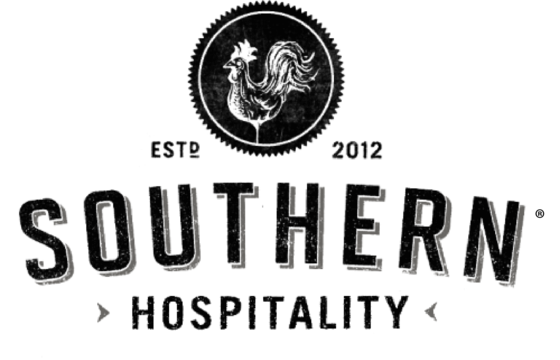THE MOTHERLOAD (Part 2): Preggers CAN Be Choosers

Just because a baby’s on board doesn’t mean your daily activities have to take a back seat. Whether you’re breakin’ a sweat, layin’ low, or steppin’ out for the evening, here are some tips on what to lookout for in the right shoes you can use for any mama-in-the-making!
SPORTY PREGGERS
A proper athletic shoe always does a (pregnant) body good for any type of workout. When on the quest for the proper shoe, you want to check for 3 things: 1) a rigid sole with shock absorption, 2) a wide toe box, and 3) arch support. A rigid sole with shock absorption protects your feet from forces caused from the added weight they have to support along with the forces and impact from the ground from walking and excessive activity. A wider toe box is essential to accommodate for the increased width and frequent swelling of the feet that may occur. Lax ligaments and reduced arches can also contribute to wider feet. Therefore, having ample arch support maintains the pregnant foot in a more ideal position for a successful workout. Remember, if your feet are in a their proper position, that means less stress for your ankles, knees, hips, and lower back!
CASUAL PREGGERS
As tempting as it may be, going barefoot is a no-go for any future mama. Sure, going shoeless may be comfortable when at home, but it makes your feet a target for debris that you may have the displeasure of stepping on. Anything that can pierce your feet can lead to injury or even infection, which during pregnancy is added (unnecessary) worry. Also, going barefoot provides no arch support, which for flatfeet puts added stress on the ankles, knees, hips, and lower back. Instead, always wear some type of house shoe- the thicker the sole the better. Remember, coverage is the key-that also means NO flip-flops/thongs…sorry! If you’re out-n-about, a great athletic shoe is always an option. However if you’re in the mood for something more laid back, clogs are nice options. They are backless (giving your feet the feeling of being free), but still provides coverage and support.
CLASSY PREGGERS
You’ve found the perfect outfit for that very special occasion and you’re thinking to yourself that nothing would set-off this outfit more than a swanky pair of heels, right!...Oh HEEL no! In terms of high heels, height is not your friend. Increased weight in the belly region makes for a change in gait and altered balance. Falling can hurt you and the child. However if you just have to have some elevation, shoes with a short wedged heel (~2in high) are a reasonable alternative. The wider sturdier heel provides better rearfoot and ankle support for better balance and walking.
Putting your best FEET forward,
SH
THE MOTHERLOAD (Part 1): Pregnancy Foot Facts Revealed

Are your pre-pregnancy kicks feeling a little too snug? Do you feel that your belly isn’t the only thing that has grown since you have become pregnant? Here are 3 reasons why you just might be right!
JUST RELAX(IN) (1st Trimester)
The falling of the arches in your feet during pregnancy are often the result of rising hormone levels. During the 1st trimester, the body sees a spike in the hormone relaxin. To help prepare the body for childbirth, relaxin widens the cervix and relaxes the pelvic ligaments. But did you know that relaxin also makes the ligaments in your feet more lax? That’s right! Lax ligaments in your feet cause your arches to collapse, and your feet to become flatter, wider, and longer. On average, the feet can become a ½ - 1 size longer during pregnancy, and often times never return to their original sizes once pregnancy has ended.
WEIGHT FOR IT… (2nd-3rd Trimester)
With the average pregnancy adding 30-40 pounds, the feet are often subject to undergoing some of the most radical of changes in the body. Increased weight gain- specifically in the belly region- redistributes a woman’s center of gravity, causing more stress on the inner knees & lower back which in turn, causes more stress on the medial parts of the feet. As a result, the arches of the feet collapse, causing the feet turn inward (pronate) when walking. Flatfeet with increased weight places added stress on the feet making achy feet and heel pain- ie plantar fasciitis- far more prevalent. In extreme cases, added weight during pregnancy can add extra layers of fat to the soles of the feet, creating issues with fitting shoes.
UNDER PRESSURE (2nd-3rd Trimester)
Swollen feet are a complaint that is all too common among women approaching motherhood. This is largely due to the fact that as a woman becomes pregnant, her uterus grows larger increasing the pressure on the veins/vessels that return blood from the legs & feet. The slowed blood circulation in the legs & feet results in increased fluid retention- hence the swollen feet. If not carefully monitored, a mother-to-be can be at risk of pregnancy induced hypertension (preeclampsia)- which if detected should be treated by your doctor immediately.
Stay tuned for Part 2 of The Motherload, where we go inside what features expecting mothers should look for when on the hunt for the right shoe!
Putting your best FEET forward,
SH




